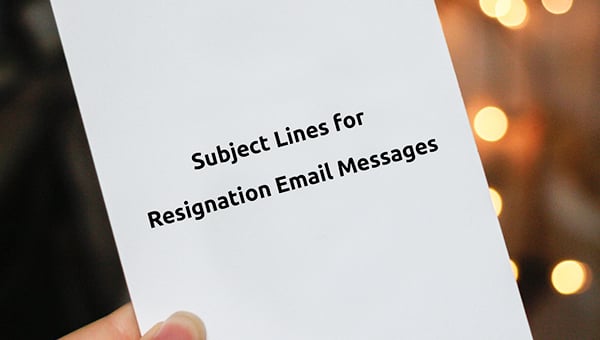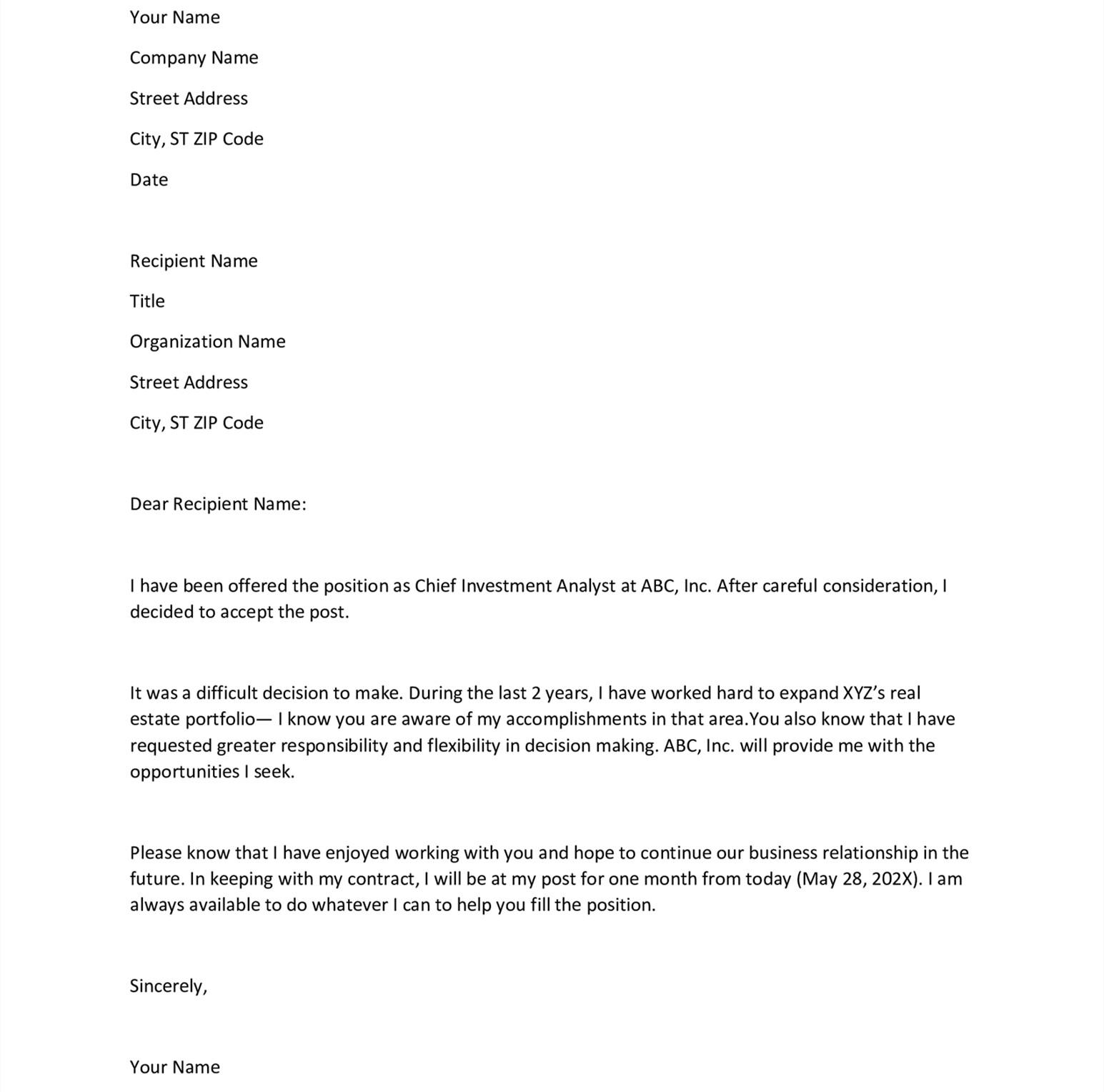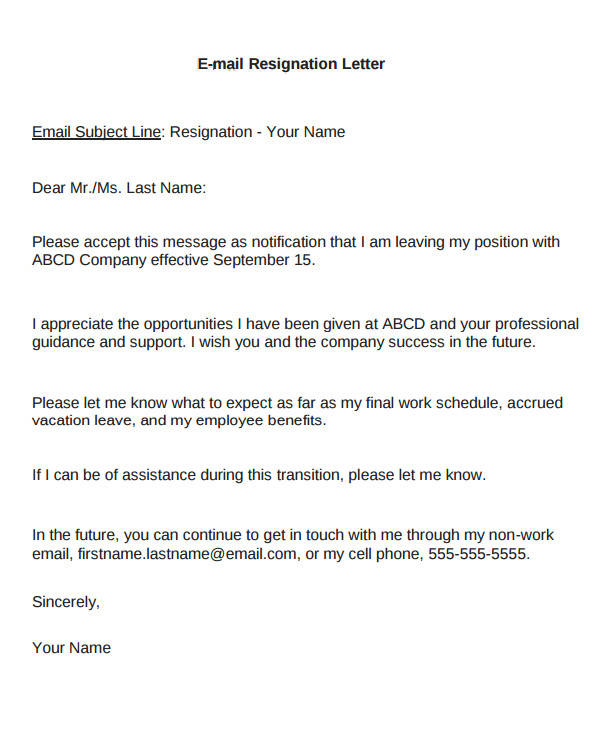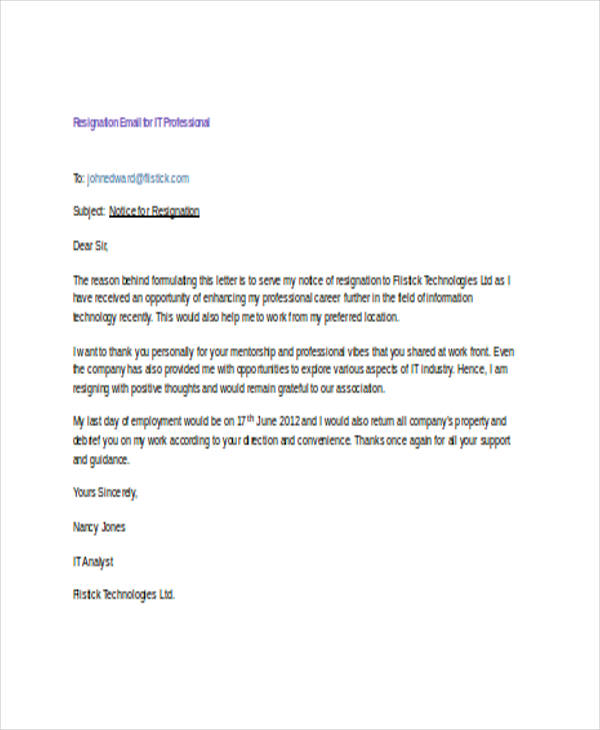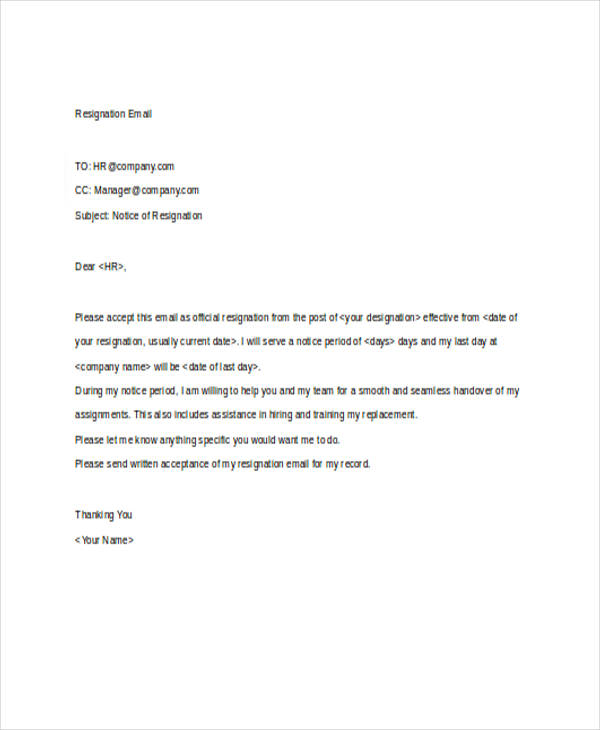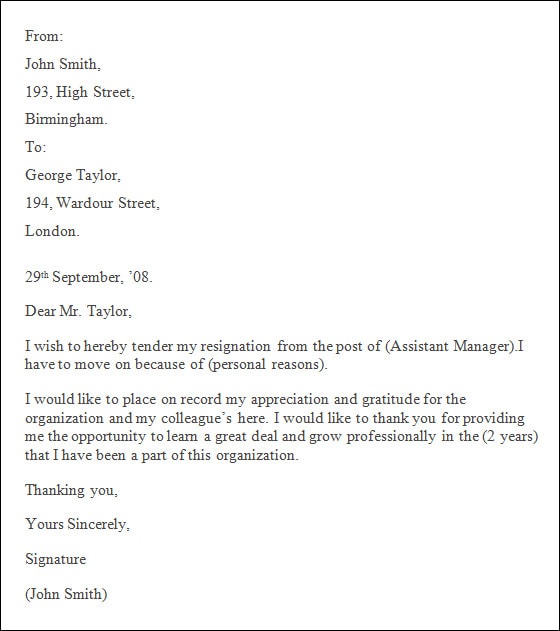The Importance of a Clear and Concise Subject Line
A well-crafted subject line is crucial in a resignation email, as it sets the tone for the entire message. The subject line is the first thing the recipient will see, and it can greatly impact their attention and perception of the email. A clear and concise subject line helps to avoid confusion and ensures that the recipient understands the purpose of the email. When learning how to title a resignation email, it’s essential to consider the importance of a well-crafted subject line.
A good subject line should be brief, yet informative. It should clearly state the purpose of the email, without giving away too much information. A subject line that is too long or too vague can lead to confusion and may even be overlooked by the recipient. On the other hand, a well-crafted subject line can help to establish a professional tone and set the stage for a respectful and clear email.
When crafting a subject line for a resignation email, consider the following tips: keep it short and to the point, avoid using jargon or technical terms, and make sure it accurately reflects the content of the email. By following these tips, you can create a subject line that effectively communicates the purpose of the email and helps to establish a professional tone.
In addition to being clear and concise, a good subject line should also be respectful and professional. Avoid using all caps or overly dramatic language, as this can come across as unprofessional. Instead, opt for a calm and respectful tone that sets the stage for a positive and respectful email.
By taking the time to craft a well-written subject line, you can help to ensure that your resignation email is well-received and effective. Remember to keep it clear, concise, and respectful, and avoid using jargon or technical terms. With a well-crafted subject line, you can set the tone for a professional and respectful email that effectively communicates your message.
Key Elements to Include in Your Resignation Email Title
When it comes to titling a resignation email, there are several key elements to include to ensure that the email is clear, concise, and effective. One of the most important elements is the purpose of the email, which should be clearly stated in the title. This helps the recipient understand the reason for the email and prepares them for the content that follows.
In addition to the purpose of the email, it’s also essential to include the employee’s name and the company name in the title. This helps to establish context and ensures that the email is addressed to the correct person. For example, a title that includes the employee’s name and company name might read: “Notification of Resignation – John Doe, Marketing Manager, XYZ Corporation.”
When learning how to title a resignation email, it’s also important to consider the level of specificity required. While the title should be clear and concise, it’s also important to avoid being too vague or generic. A title that is too vague may not effectively communicate the purpose of the email, while a title that is too specific may give away too much information.
Another key element to include in a resignation email title is the date of the last day of work. This helps to establish a clear timeline and ensures that the recipient understands when the employee will be leaving the company. For example, a title that includes the date of the last day of work might read: “Notification of Resignation – John Doe, Marketing Manager, XYZ Corporation, Effective March 31st.”
By including these key elements in the title of a resignation email, employees can ensure that their email is clear, concise, and effective. This helps to establish a professional tone and ensures that the recipient understands the purpose and content of the email.
When crafting a resignation email title, it’s also important to consider the company’s culture and tone. For example, a company with a more formal culture may require a more formal title, while a company with a more casual culture may allow for a more relaxed title. By taking the time to consider the company’s culture and tone, employees can ensure that their resignation email title is effective and well-received.
How to Avoid Ambiguity and Confusion in Your Title
When it comes to titling a resignation email, one of the most common mistakes is using ambiguous or confusing language. This can lead to misunderstandings and misinterpretations, which can be detrimental to the employee’s professional reputation and relationships with colleagues. To avoid ambiguity and confusion, it’s essential to use clear and concise language in the title.
One way to avoid ambiguity is to avoid using vague or generic terms. For example, a title that simply reads “Notification” or “Update” is too vague and doesn’t provide any context. Instead, use specific language that clearly indicates the purpose of the email, such as “Notification of Resignation” or “Update on My Departure.”
Another way to avoid ambiguity is to avoid using jargon or technical terms that may be unfamiliar to the recipient. While it may be tempting to use industry-specific language, it’s essential to remember that the recipient may not be familiar with these terms. Instead, use plain language that is easy to understand.
It’s also essential to avoid using language that is too casual or informal. While a resignation email may be a personal and emotional experience, it’s essential to maintain a professional tone. Avoid using slang, colloquialisms, or overly casual language, as this can come across as unprofessional.
Finally, it’s essential to proofread and edit the title carefully to ensure that it is clear and concise. A well-crafted title can make a significant difference in how the email is received and interpreted. By taking the time to craft a clear and concise title, employees can ensure that their resignation email is effective and well-received.
For example, consider the following unclear subject line: “My Decision.” This title is too vague and doesn’t provide any context. Instead, rephrase it to something like: “Notification of My Resignation, Effective [Date].” This title is
The Role of Tone in Your Resignation Email Title
When it comes to titling a resignation email, tone is a crucial aspect to consider. The tone of the title can set the stage for the rest of the email and convey the employee’s attitude and intentions. A professional and respectful tone is essential in a resignation email title, as it can help to maintain a positive relationship with the employer and colleagues.
A well-crafted resignation email title should convey a tone that is clear, direct, and respectful. Avoid using language that is too casual or informal, as this can come across as unprofessional. Instead, use language that is formal and polished, such as “Notification of Resignation” or “Formal Notice of Departure.”
It’s also essential to avoid using language that is too negative or critical. A resignation email title should not be used as an opportunity to express grievances or complaints. Instead, focus on conveying a positive and professional tone that is respectful of the employer and colleagues.
When learning how to title a resignation email, it’s essential to consider the tone of the title and how it will be received by the employer and colleagues. A well-crafted title can help to maintain a positive relationship and ensure a smooth transition.
For example, consider the following title: “I’m Outta Here!” This title is too casual and informal, and may come across as unprofessional. Instead, rephrase it to something like: “Notification of My Resignation, Effective [Date].” This title is clear, direct, and respectful, and conveys a professional tone.
By conveying a professional and respectful tone in the resignation email title, employees can
Best Practices for Titling a Resignation Email
When it comes to titling a resignation email, there are several best practices to keep in mind. By following these guidelines, you can ensure that your resignation email title is clear, concise, and effective.
First, use a standard format for your resignation email title. This can include the employee’s name, the company name, and the purpose of the email. For example: “Notification of Resignation – John Doe, Marketing Manager, XYZ Corporation.”
Second, avoid using jargon and slang in your resignation email title. While it may be tempting to use industry-specific language, it’s essential to remember that the recipient may not be familiar with these terms. Instead, use plain language that is easy to understand.
Third, keep your resignation email title concise. Aim for a title that is no more than 5-7 words in length. This will help to ensure that the title is clear and easy to read.
Fourth, use a professional tone in your resignation email title. Avoid using language that is too casual or informal, as this can come across as unprofessional. Instead, use language that is formal and polished.
Finally, proofread and edit your resignation email title carefully. A well-crafted title can make a significant difference in how the email is received and interpreted. By taking the time to craft a clear and concise title, you can ensure that your resignation email is effective and well-received.
By following these best practices, you can create a resignation email title that is clear, concise, and effective. Remember to use a standard format, avoid jargon and slang, keep it concise, use a professional tone, and proofread and edit carefully.
When learning how to title a resignation email, it’s essential to consider the best practices outlined above. By following these guidelines, you can ensure that your resignation email title is effective and well-received.
Common Mistakes to Avoid When Titling a Resignation Email
When it comes to titling a resignation email, there are several common mistakes to avoid. By being aware of these mistakes, you can ensure that your resignation email title is effective and well-received.
One common mistake to avoid is using all caps in the title. This can come across as shouting or aggressive, and may be perceived as unprofessional. Instead, use title case or sentence case to convey a more professional tone.
Another mistake to avoid is including unnecessary information in the title. While it may be tempting to include details about your reason for leaving or your future plans, this can make the title too long and confusing. Instead, focus on conveying the essential information in a clear and concise manner.
Being too casual is also a common mistake to avoid when titling a resignation email. While it may be tempting to use a friendly or informal tone, this can come across as unprofessional and may not be taken seriously. Instead, use a formal and polished tone to convey a sense of professionalism and respect.
Using jargon or technical terms that may be unfamiliar to the recipient is another mistake to avoid. While it may be tempting to use industry-specific language, this can make the title confusing or unclear. Instead, use plain language that is easy to understand.
Finally, failing to proofread and edit the title is a common mistake to avoid. A well-crafted title can make a significant difference in how the email is received and interpreted. By taking the time to proofread and edit the title, you can ensure that it is clear, concise, and effective.
By avoiding these common mistakes, you can create a resignation email title that is effective and well-received. Remember to use a professional tone, avoid unnecessary information, and proofread and edit carefully.
When learning how to title a resignation email, it’s essential to be aware of these common mistakes and take steps to avoid them. By doing so, you can ensure that your resignation email title is clear, concise, and effective.
Examples of Effective Resignation Email Titles
When it comes to titling a resignation email, there are several examples of effective titles that can be used in different situations. Here are a few examples:
Example 1: “Notification of Resignation – John Doe, Marketing Manager, XYZ Corporation”
This title is effective because it clearly states the purpose of the email, includes the employee’s name and title, and specifies the company name.
Example 2: “Resignation of [Employee Name] – Effective [Date]”
This title is effective because it clearly states the purpose of the email, includes the employee’s name, and specifies the effective date of the resignation.
Example 3: “Formal Notice of Departure – [Employee Name], [Company Name]”
This title is effective because it clearly states the purpose of the email, includes the employee’s name, and specifies the company name.
These examples demonstrate how to title a resignation email in a clear and concise manner. By including the essential elements of the purpose of the email, the employee’s name, and the company name, you can create a title that is effective and well-received.
When adapting these examples to different situations, consider the following tips:
Use a standard format for your resignation email title, such as “Notification of Resignation – [Employee Name], [Company Name]”
Avoid using jargon or technical terms that may be unfamiliar to the recipient
Keep the title concise and to the point, avoiding unnecessary information
Use a professional tone and avoid using all caps or overly dramatic language
By following these tips and using the examples provided, you can create a resignation email title that is effective and well-received.
Final Tips for Crafting a Professional Resignation Email Title
When it comes to crafting a professional resignation email title, there are several final tips to keep in mind. By following these tips, you can ensure that your resignation email title is effective and well-received.
First, proofread and edit your resignation email title carefully. A well-crafted title can make a significant difference in how the email is received and interpreted. By taking the time to proofread and edit the title, you can ensure that it is clear, concise, and free of errors.
Second, consider the tone of your resignation email title. A professional and respectful tone is essential in a resignation email title, as it can help to maintain a positive relationship with the employer and colleagues.
Third, keep your resignation email title concise and to the point. Avoid using unnecessary information or jargon that may be unfamiliar to the recipient.
Finally, use a standard format for your resignation email title, such as “Notification of Resignation – [Employee Name], [Company Name]”. This can help to ensure that the title is clear and concise, and that it includes all the necessary information.
By following these final tips, you can create a professional resignation email title that is effective and well-received. Remember to proofread and edit carefully, consider the tone, keep it concise, and use a standard format.
When learning how to title a resignation email, it’s essential to keep these final tips in mind. By doing so, you can ensure that your resignation email title is clear, concise, and effective.
In conclusion, crafting a professional resignation email title is an important step in the resignation process. By following the tips and guidelines outlined in this article, you can create a title that is clear, concise, and effective.

